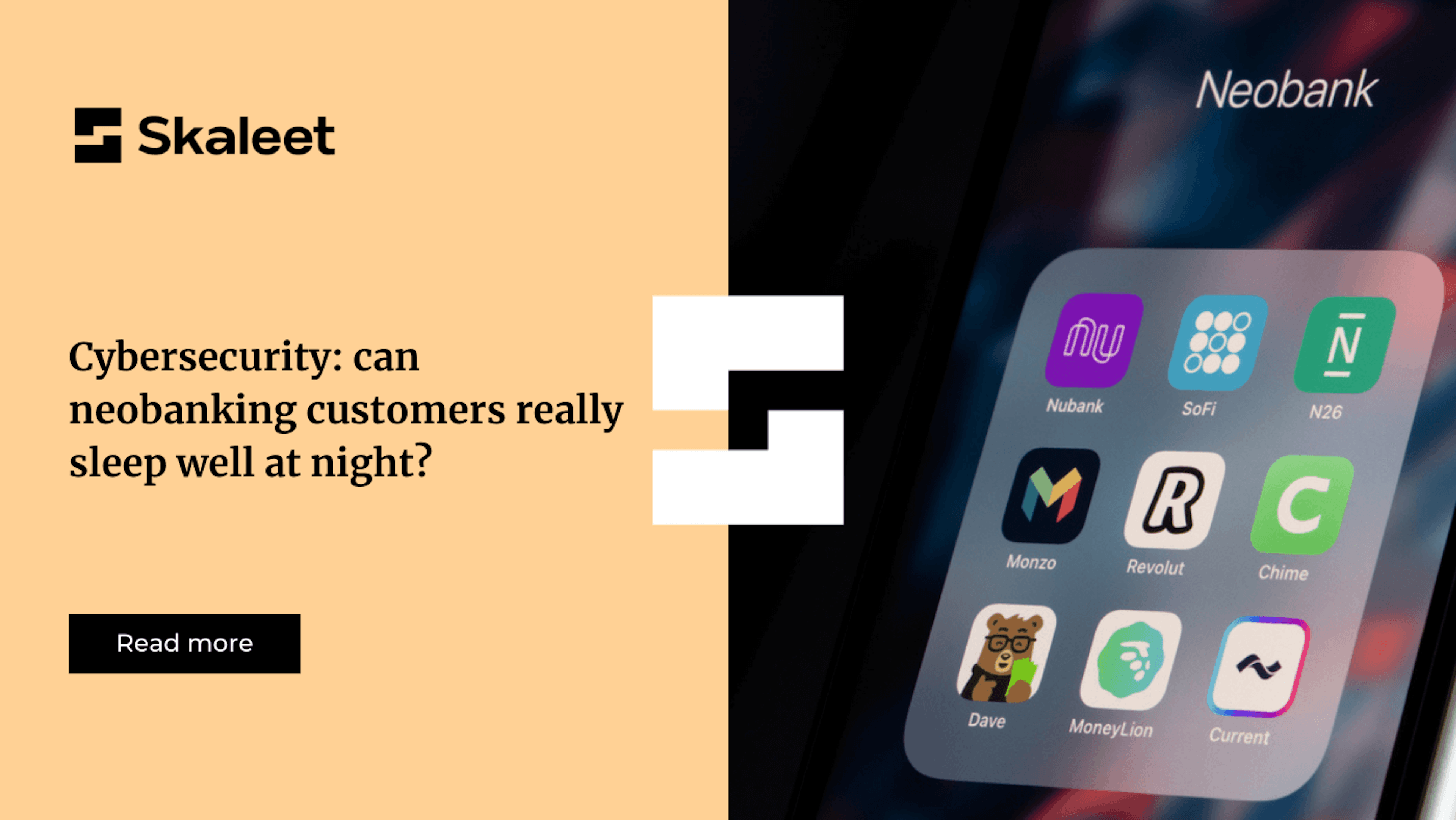
August 11th, 2021 • Neo banks
Cybersecurity: can neobanking customers really sleep well at night? 😴
In fact, attempts at cyber-attacks on banks have exploded since the beginning of the COVID crisis...
September 15th, 2021 • Neo banks

When the first neobanks were launched in the early 2010s, their main selling point was being digital and offering a better customer experience.
While traditional banks were clumsy, inflexible, and bureaucratically frustrating, Monzo Bank, Revolut, and even N26 have been a breath of fresh air: faster, more convenient, and entirely digital. Initially, they were low-cost and more transparent.
By 2021, the gap has narrowed considerably. Traditional bank apps have caught up a bit. And some banks, such as Goldman Sachs(Marcus), La Banque Postale (My French Bank), or Bank Leumi(Pepper), have launched their own digital players that are enjoying resounding success.
Neobanks are still far from replacing traditional banks. While their growth rates continue to soar, profitability is still out of reach for the majority of these players. In fact, according to a study by the Boston Consulting Group, only 13 neobanks (out of 249) worldwide will be profitable in 2021. What does this mean for neobanks? Is it time to try a new approach?
Next-generation neobanks have long sought to build applications for the general public while pursuing growth at all costs. Is this still the key to success? Or is the next wave of neobanking in vertical banking, building high-quality banking products, targeting specific consumers—niche markets?
Vertical banking means offering a highly personalized banking experience to a very specific type of customer. While the usual approach is to add new layers of technology to an existing banking product, vertical banking does the opposite. The objective is to create a product that will meet the expectations of well-defined customers, namely a banking niche.
There are several types of examples demonstrating the vertical banking approach:
This type of specialization is not a new idea. In 1904, Amadeo Giannini founded the Bank of America to meet the needs of the Italian community at a time when banks were only interested in large corporations and wealthy individuals.
However, vertical banking goes much further. In addition to general characteristics such as demographics and geography, it also targets psychographic traits such as lifestyles, attitudes, and beliefs.
Unfortunately, being digital is no longer considered a differentiator for neobanks that want to enter a small market.
While digital transformation has been a high priority for traditional banks for many years, the COVID-19 pandemic has accelerated the process. Experts estimate that the banking industry has achieved what would have taken nearly a decade under normal circumstances in a few months.
At the same time, many providers of Banking-as-a-Service and Core Banking Platforms have changed the rules of the game for new entrants to the market. While the first generation of neobanks had to create their technology stack from scratch, today’s neobanks no longer have to. They can leverage state-of-the-art banking infrastructures while launching their neobank more quickly (within a few months) and at a lower cost.
As a result, the barriers to market entry have been lowered, and customer expectations have never been higher. With over 250 neobanks worldwide (Exton Consulting study), offering similar services (checking account, debit cards, cashback), security, real-time access, and a customer-friendly experience, the only troublesome aspect is choosing a neobank. The real question is no longer whether a neobank can provide better banking or financial services than a legacy bank. Instead, it’s the value the neobank can create for the customer.
With the lowering of barriers to market entry and new customer habits, there is another compelling reason for neobanks to specialize: to achieve profitability earlier in their life cycle.
First-generation neobanks have never made profitability their primary focus; growth has always been their top priority. While the neobanking market is close to saturation (customers tend to use neobanks as secondary accounts), growth has never been sufficient to outpace the high cost of customer acquisition. In addition, the early neobanks always took into account that customers would use them for secondary purposes, such as for travel or entertainment. Their strategy has always been to get a foot in the door and entice customers, over time, to switch their primary account to a neobank.
However, this quest for extreme growth requires neobanks to achieve critical mass. This strategy was realistic in the early 2010s when traditional banks’ digital incompetence gave neobanks the advantage. Nowadays, being digital-native is no longer a strong selling point, so that aspect is becoming a hard sell. In addition, COVID-19 has resulted in less travel and socialization for clients due to health restrictions. This has resulted in a decline in the most important revenue streams for neobanks, namely debit card interchange fees and commissions. As a result, they have accumulated losses.
In comparison, the vertical neobank model does not have a growth-at-all-costs strategy to achieve profitability. The value proposition of digital isn’t the core service but the follow-on service that accompanies the core service.
Take the example of Qonto, which offers a business bank account designed for SMEs, startups, and freelancers. Any fintech company can create a bank account that allows for making or accepting payments. What sets Qonto apart is the very valuable ecosystem it has created for its customers.
Synchronized with its accounting tool in real-time, the professional account it offers provides a continuous overview of results. You can then assign budgets to projects or teams while tracking expense items. Other features include the ability to manage invoices directly from the account, reduce payment delays, and access financing for your business. These well-thought-out add-ons solve significant problems while saving time and potentially money since it relieves customers from having to purchase expensive stand-alone software.
Research has shown that customers are willing to pay up to 20% more for a highly personalized product. Thus, offering add-ons tailored to a very specific type of customer segment is a golden opportunity to cross-sell and diversify revenue streams from the start. More importantly, commitment and, in turn, loyalty are likely to be higher when a product fits a customer’s lifestyle. For example, Daylight offers LGBTQ+ clients financial coaching, tailored savings, and cards using their preferred names, while Mizen gives Muslims access to financial products compatible with their religious ethics.
By 2028, the neobanking market is expected to reach approximately 593.62 billion euros. There is still plenty of room for neobanks to gain market share, but only for those that stop being the bank for everyone and become the bank for each. If they want to retain customers, they have to focus on creating innovative financial products and services that improve customers’ lives, especially those that meet specific needs traditional banks cannot meet.
Our Core Banking Platform can play an essential role in accelerating the vertical banking wave. Instead of creating a whole banking infrastructure, vertical neobanks can simply leverage our API-based solution, providing modular banking services, while enabling integration of new partners in order to create your own full-service ecosystem. You will be able to launch new products in a few months, reduce costs and above all, focus on creating added value for your customers.
The possibilities for vertical banks are endless.
Innovation. FinTech. Digital Banking. Neobanks. Open Banking. Core Banking. Cloud.

August 11th, 2021 • Neo banks
In fact, attempts at cyber-attacks on banks have exploded since the beginning of the COVID crisis...